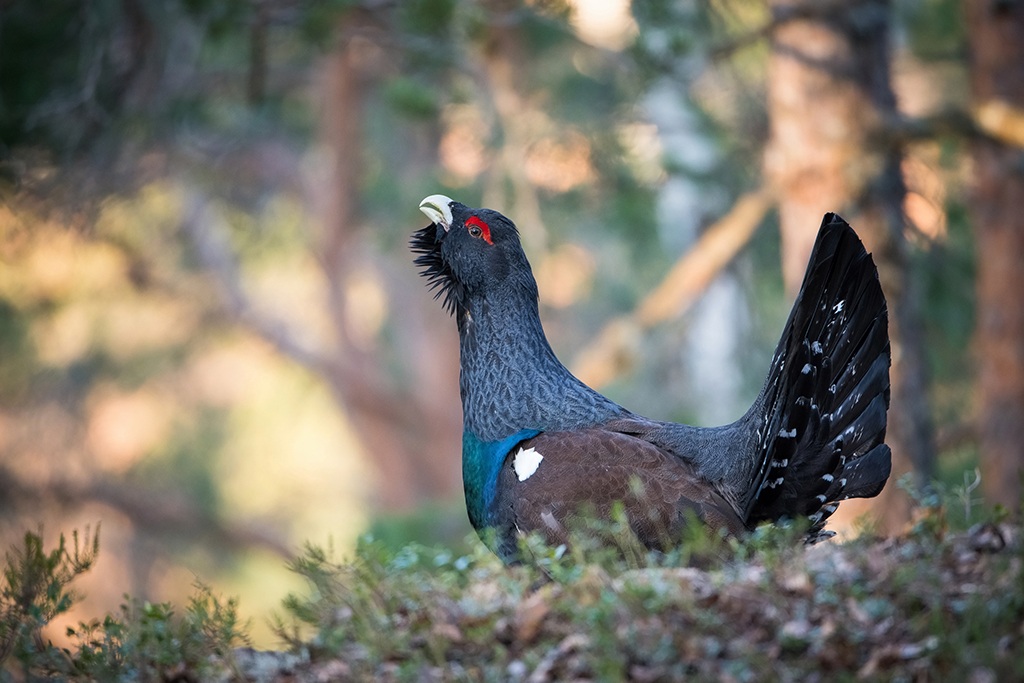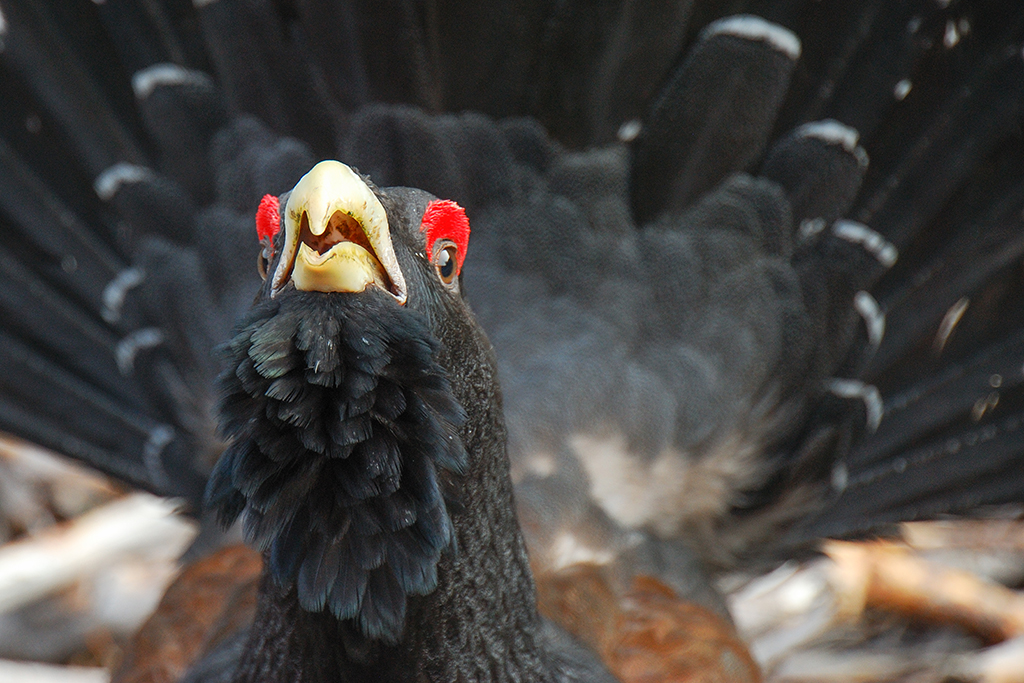Internationally recognised social scientists have been helping a Highland community establish itself as a voice for capercaillie conservation, in a first for the UK.
Dr Alistair Bath and Monica Engel of Newfoundland & Labrador, Canada have been working with the Carrbridge Capercaillie Group – using a mixture of in depth interviews, workshops and questionnaires along with applied research techniques – to establish an accurate picture of how residents feel about capercaillie and the type of actions the community are willing to investigate to help save this iconic species.
At a public event last week, interim results showed that over 80 per cent of Carrbridge residents are behind efforts to save capercaillie and that residents are willing to play their part.
In the 1970s there were around 20,000 capercaillie in Scotland, now there are just over 1,000 birds. Numbers have fallen for various reasons including habitat loss, predation, cold wet weather at nesting time, collisions with unmarked deer fences and disturbance by human activity.
Recognising the species’ precarious position and with funding from the National Lottery Heritage Fund for a developmental phase, the Cairngorms National Park Authority (CNPA) set up the Cairngorms Capercaillie Project, with the potential for a multi-million pound award within the next year. The Carrbridge community and surrounds – home to a critically important population – was given the opportunity to play a pivotal role in the project, piloting the way and helping learn lessons in how to successfully enable communities to take the lead.
A local working group was established in the spring of 2018 who set about trying to establish what the community would like to see happen. There appeared to be little consensus – and keen to make progress – the services of Dr Bath and Ms Engel were sought. The duo have an international reputation for listening effectively and working towards coexistence between residents and wildlife and solving issues between residents and authorities successfully.

Dr Bath explained: ‘We enjoy working with communities and being able to give them data to better understand and represent the views of residents. Traditionally, communities have had to listen to vocal voices who shout the loudest without knowing whether such voices represent a few, most or all of their residents.
‘With the 247 residents that responded quantitatively to the Carrbridge questionnaire, we can represent the entire community 19 times out of 20, plus or minus 5 percent; the sample size needed to represent various community sizes is based on a proven internationally accepted formula. You could represent a billion people with simply 384 residents and with Carrbridge’s adult population being over 600 individuals, 242 is the required sample size, so it’s great to see so many get involved’
‘Along with research work, we also help diverse interest groups work towards consensus on management plans and strategies. It is rewarding to help a community see a positive future and create a positive community environment. The enthusiasm of the Carrbridge Capercaillie Group is great and it is a pleasure to work with such dedicated individuals who are already making a conservation difference.’
Having carried out listening exercises in the village and studied the results of very detailed questionnaires, the scientific data gathered by Dr Bath and Ms Engel has clearly shown that Carrbridge is supportive of the project and having this mandate from the community has certainly boosted the Carrbridge Capercaillie Group’s confidence.

Issie Inglis, a member of the group said: ‘We were struggling to establish what it was our community wanted – sometimes it’s the loudest voices that are heard but they are not necessarily speaking for the majority. To ascertain the actual views of the bulk of the community we felt we needed the most robust evidence to ensure we got ourselves on the right track. With financial support we were able to engage Alistair and Monica’s valuable services and we can now say with confidence that we have the support of the community in tackling the tricky and complicated issue of capercaillie conservation.
‘We still have some work to do with Alistair later this month and in December we should find out the latest capercaillie population figures. After that we can start to map out what practical action we think is required. We won’t hear until next summer if the CNPA’s application for lottery funding for a full project has been successful but the Carrbridge community is committed and ready to go whatever the outcome.’
Retired gamekeeper and member of the Carrbridge Capercaillie Group, Frank Law added: ‘The capercaillie is an iconic species – it is the world’s largest grouse and has been with us since the last Ice Age. It would be a tragedy if we lost this bird and we must do everything we can to ensure that it does not happen. It is very exciting to be at the heart of this project with Carrbridge set to be the first community in the National Park to create and deliver a community-led action plan to help capercaillie.’
Carolyn Robertson, the Cairngorms Capercaillie project manager said: ‘Putting people at the heart of capercaillie conservation is central to this project but is not without challenges so we are grateful to the Carrbridge community for all their hard work. This is a community that is thinking big and it is therefore right to bring in the global leading experts to help solve this tough conservation challenge. This social science research approach – a mix of qualitative and quantitative research – hasn’t been used in the UK before for capercaillie conservation so it is exciting for Carrbridge to be taking this pioneering step.’
TAGS

